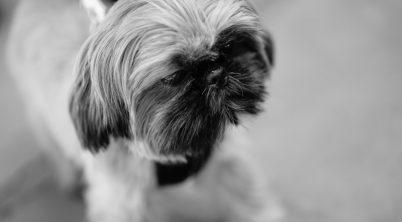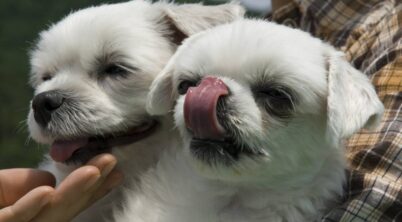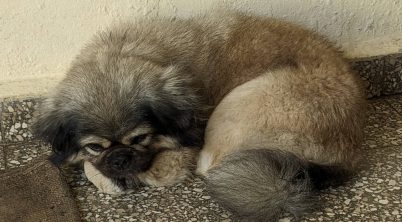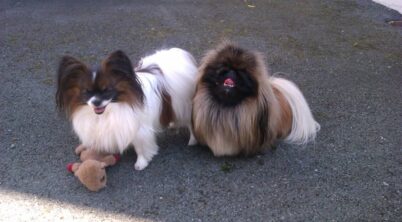The Pekingese, a toy breed with an ancient Chinese origin, is admired for its lion-like appearance and confident demeanor. Known as a brachycephalic breed, the Pekingese possesses a distinctive short-muzzled face and compact skull structure, characteristics that contribute to its unique and cherished look. However, these same physical traits can lead to specific health challenges, particularly regarding respiratory function.
One of the most prominent health concerns in Pekingese dogs is their susceptibility to breathing issues. The brachycephalic nature of their snout reduces nasal passage size, which can obstruct airflow and make breathing laborious. This can present as noisy breathing, snoring, or in more severe cases, life-threatening conditions such as Brachycephalic Airway Obstruction Syndrome (BAOS). Symptoms and severity can vary greatly from one individual to another, necessitating a careful and personalized approach to their care and management.
When managing Pekingese breathing difficulties, an accurate diagnosis through a comprehensive physical examination is crucial. Breathing problems may be influenced by several factors including anatomical defects, obesity, or the development of secondary conditions. Treatment strategies can range from lifestyle adjustments to medical interventions or even surgery, depending on the severity of the condition and its impact on the dog’s quality of life.
Recognizing Breathing Issues in Pekingese
Recognizing the signs of breathing issues in Pekingese is critical for the well-being of these brachycephalic dogs. Early detection and veterinary intervention can greatly improve their quality of life.
Common Symptoms
Pekingese dogs may exhibit various symptoms that suggest respiratory challenges. Owners should be vigilant for:
- Snoring: While some snoring can be normal, excessively loud snoring may indicate a breathing problem.
- Coughing: Persistent coughing is a warning sign and should not be overlooked.
- Rapid Breathing: An increased respiratory rate can signal distress.
- Wheezing: A whistling sound during breathing that may indicate airflow obstruction.
- Panting: Excessive panting without significant physical exertion could be a concern.
- Gagging: Frequent gagging or retching may suggest respiratory compromise.
- Mouth Breathing: Pekingese should not typically breathe with their mouths open; this is a sign of difficulty breathing.
- Labored Breathing: Struggling to breathe or extended breaths can signify a problem.
- Fainting: Episodes of losing consciousness could be related to oxygen deprivation from severe respiratory difficulties.
When to See a Veterinarian
Owners should consult with a veterinarian if they notice any of the aforementioned symptoms or if they observe their Pekingese:
- Having difficulty catching their breath or stopping activity to catch their breath.
- Showing signs of distress such as restlessness, reluctance to move, or changes in behavior related to breathing difficulty.
It is essential for Pekingese owners to be aware of their pet’s typical breathing patterns and behaviors so that any deviations can be noted and addressed promptly. Regular check-ups can help catch any potential issues early.
Underlying Health Concerns
Pekingese dogs are susceptible to a range of respiratory health issues, many of which are serious and require prompt veterinary attention. These concerns often stem from their distinct physical conformation, environmental factors, and genetic predispositions.
Brachycephalic Airway Syndrome
Brachycephalic Airway Syndrome refers to a set of respiratory problems affecting dogs with short noses and flat faces, like the Pekingese. Due to their cranial structure, these dogs often suffer from upper airway obstruction. Components of this syndrome include stenotic nares (narrowed nostrils), an elongated soft palate, and tracheal collapse. These structural abnormalities can lead to breathing difficulties, snoring, and a decreased tolerance for exercise.
Allergies and Infections
Allergies in Pekingese can manifest as skin and respiratory problems. They may react to environmental allergens or parasites with symptoms like scratching, hair loss, and bronchitis. Skin infections can occur alongside these allergic reactions, exacerbating the discomfort. Additionally, respiratory infections can develop into pneumonia, further compromising their already delicate respiratory system.
Heart Disease
Heart disease is another critical health concern in Pekingese. The breed is prone to various cardiac conditions, which can worsen any existing breathing issues. Common heart diseases include valve disorders and heart failure. A compromised heart can affect the respiratory system’s capacity, leading to coughing and difficulty breathing, especially during physical activity.
Each of these conditions poses a serious threat to the well-being of a Pekingese and may require a combination of medical management and lifestyle adjustments. Monitoring a Pekingese for signs of breathing difficulties, staying current with veterinary check-ups, and prompt treatment of any respiratory disorders are crucial to managing these underlying health concerns.
Preventative Measures and Care
Pekingese dogs require specific care strategies to manage their propensity for breathing difficulties. Effective weight control, balanced exercise, and appropriate feeding practices are pivotal.
Weight Management
Maintaining an optimal weight is crucial for Pekingese dogs to prevent the exacerbation of respiratory problems. They should avoid obesity, which can lead to increased breathing difficulties. Regular weigh-ins and adherence to weight guidelines provided by a veterinarian ensure a healthy lifestyle.
- Weight Tracking: Monthly weigh-ins
- Body Condition Scoring: Routine evaluations
Exercise and Activity
While Pekingese dogs need daily physical activity, they often exhibit exercise intolerance due to their compact facial structure. Short, gentle walks in cool weather are beneficial. Owners should monitor their dogs for signs of overexertion, such as heavy panting or reluctance to move.
- Cool Weather Walks: Early mornings or evenings
- Activity Monitoring: Observation for breathing changes
Diet and Feeding
A balanced diet contributes to maintaining a healthy weight and supports the respiratory system. Small, measured meals fed twice a day can prevent overeating. High-quality dog food with the right balance of nutrients is highly recommended.
- Feeding Schedule: Twice daily with portion control
- Nutritional Requirements: Consultation with a veterinarian for dietary needs
Medical Interventions
For Pekingese dogs suffering from breathing issues, there are specific medical interventions that may be recommended by a veterinarian. These interventions can range from non-surgical options, like medications and therapies, to surgical procedures designed to directly address physical abnormalities causing respiratory distress.
Medications and Therapies
A veterinarian may prescribe medications to manage breathing difficulties in Pekingese. These can include:
- Steroids: To reduce inflammation in the airways.
- Antibiotics: In cases where a respiratory infection is present.
- Oxygen Therapy: For acute situations to stabilize the dog’s oxygen levels.
These treatments aim to alleviate symptoms and improve breathing efficacy.
Surgical Options
Surgical interventions are considered for Pekingese with severe anatomical respiratory issues. They typically involve:
- Stenotic Nares Correction: A procedure to widen the nostrils, allowing for better airflow.
- Soft Palate Resection: The removal of excessive soft palate tissue to clear the airway.
While surgery can be a major intervention, it may provide significant relief from the chronic distress caused by brachycephalic airway obstruction syndrome.
Caring for a Pekingese with Breathing Problems
Owners of Pekingese dogs must prioritize their pets’ respiratory health due to breed-specific challenges. Effective care for these dogs revolves around daily management and vigilant monitoring.
Daily Management
Environment: Maintaining a stress-free environment is crucial for Pekingese dogs. Excessive heat or humidity can exacerbate breathing difficulties, so a cool, air-conditioned space is recommended. Exercise should be moderate, avoiding peak temperature times.
Diet and Weight: A healthy diet contributes to better respiratory function. Overweight Pekingese are more prone to breathing issues; thus, regulating their food intake is fundamental to their daily management.
- Feed measured portions according to a vet-recommended schedule.
- Avoid “free-feeding” to prevent obesity.
Grooming: Regular grooming helps to reduce stress and restlessness associated with discomfort from overgrown hair, which can impact breathing if hair obstructs nasal passages.
Monitoring and Long-Term Care
Veterinarian Visits: Routine visits to the veterinarian for physical exams are key. They may include:
- Listening to the dog’s breathing
- Checking for signs of kennel cough
- Tests, if needed, such as x-rays or endoscopy to monitor the airway’s health
Home Observations: Owners should be attuned to changes like increased snorting or noisy breathing that might indicate a progression of respiratory issues.
- Monitor for any signs of restlessness, which could signal discomfort from breathing difficulties.
Lifespan and Quality of Life: Long-term care also involves considering the overall impact on the Pekingese’s lifespan and quality of life. Prompt attention to any health concerns can significantly improve their comfort and longevity.








